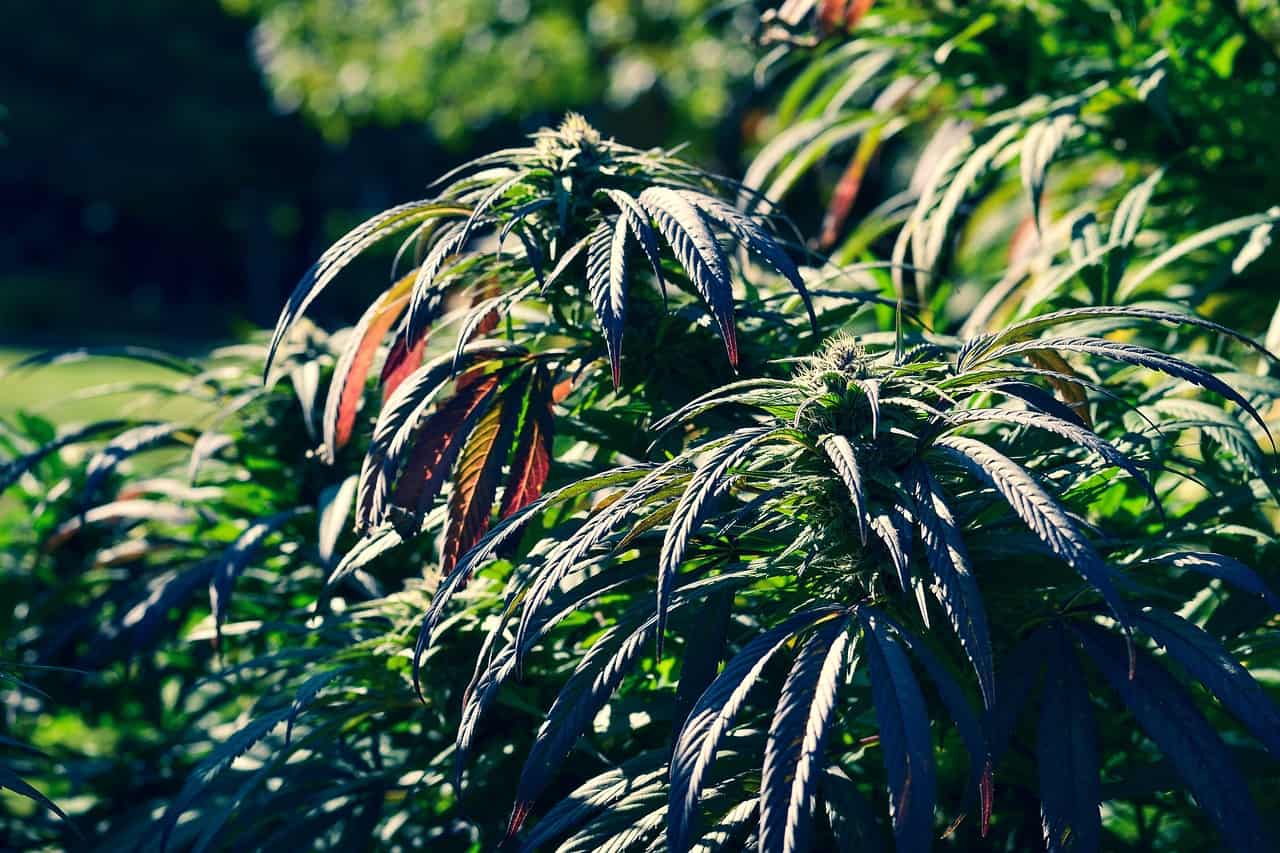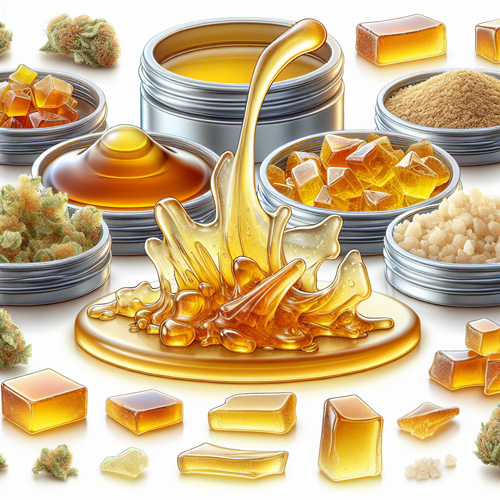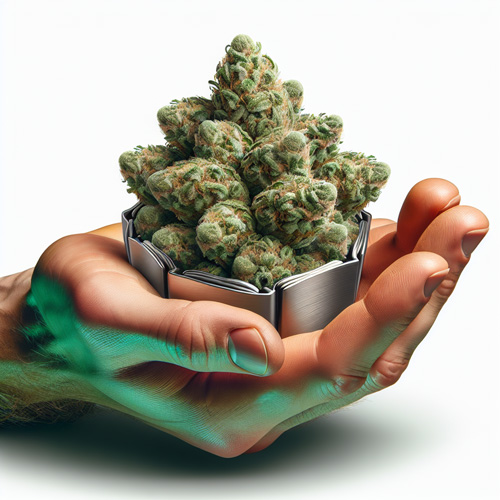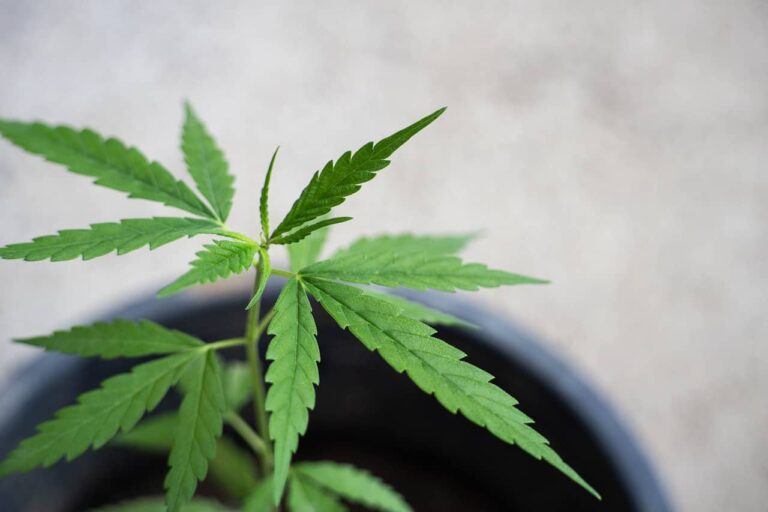
Hemp Breeding and Genetic Selection
What is Hemp?
Hemp, scientifically known as Cannabis sativa L., is a versatile plant that has been cultivated for thousands of years for its fibers, seeds, and medicinal properties.
Unlike its close relative marijuana, hemp contains low levels of THC, the psychoactive compound responsible for the “high” effect. This makes hemp a valuable resource for various industries, including textiles, construction, food, and pharmaceuticals. Hemp plants can be either monoecious or dioecious, meaning they can have both male and female flowers on the same plant or distinct male and female plants, respectively.
The cultivation of hemp varies depending on the desired end-use, with different cultivars and varieties selected for their specific traits such as fiber quality, seed production, or cannabinoid content. Breeding and genetic selection play a crucial role in developing hemp cultivars with desirable traits, such as increased yield, disease resistance, or specific chemical profiles.
Understanding the genetic makeup of hemp plants through techniques like marker-assisted selection and genome-wide association studies helps breeders to enhance productivity and quality in this important bioresource crop.
Why is Hemp Breeding and Genetic Selection Important?
Hemp breeding and genetic selection play a crucial role in ensuring a reliable supply of stable seed genetics for the booming U.S. hemp industry. With the demand for hemp products skyrocketing, it is essential to have consistent and high-quality plant material. Professional plant breeders are actively working to develop new hemp cultivars with desired traits that can thrive in different climates and microclimates.
By selectively breeding hemp plants, breeders can focus on enhancing specific traits like fiber quality, yield, and disease resistance. This allows farmers to cultivate hemp varieties that are better suited to their specific growing conditions. For example, breeders are working on developing cultivars that can tolerate extreme temperatures, resist pests, and have shorter flowering times.
Moreover, genetic selection in hemp breeding also helps improve the overall genetic stability of the crops. This is important to maintain the integrity and uniformity of the cultivated hemp varieties. With the help of advanced techniques like marker-assisted selection and identification of DNA markers, breeders can accurately predict the traits of individual plants and make informed decisions about which plants to breed for future generations.
Hemp breeding and genetic selection are vital for the successful cultivation of hemp in the growing U.S. industry. By focusing on developing new varieties with desired traits, breeders ensure a reliable supply of stable seed genetics that can thrive in different climates and microclimates. This not only benefits farmers but also supports the sustainable growth and expansion of the hemp industry as a whole.
History of Hemp Breeding and Genetic Selection
Hemp has a long history of cultivation dating back thousands of years, and throughout its history, humans have been selecting and breeding plants with desirable traits.
The genetic selection process in hemp breeding has evolved over time, from early farmers saving and planting seeds from their best plants, to more sophisticated techniques used today. In recent decades, with advancements in molecular markers and genetic research, breeders have been able to make more targeted selections based on specific desired traits such as fiber quality, yield, and disease resistance.
This has allowed for the development of improved hemp cultivars that are better suited to various growing conditions and farming needs. As the hemp industry continues to grow, ongoing breeding efforts are being carried out to improve the overall genetic stability of cultivated varieties and introduce new and desirable traits.
Through the use of advanced techniques like marker-assisted selection and the identification of DNA markers, breeders can now make more informed decisions and accurately predict the traits of individual plants, paving the way for the future of hemp breeding and genetic selection.
Early Cultivation of Hemp
The early cultivation of hemp dates back thousands of years and has a rich historical context. Ancient civilizations such as the Egyptians, Chinese, and Indians recognized the numerous benefits of hemp and cultivated it for various purposes.
Methods of cultivation in these early civilizations involved sowing hemp seeds in well-prepared soil, watering the plants, and allowing them to grow until they reached maturity. Once mature, the hemp plants were harvested, and the fibers were extracted for use in making textiles, ropes, and other materials.
One notable characteristic of hemp is its open-pollinated nature. Hemp plants are dioecious, meaning they have separate male and female flowers. This allows for natural outcrossing, where pollen from male flowers is transferred to female flowers, resulting in genetic variability within the hemp population.
The open-pollinated nature of hemp and its dioecious characteristics contribute to the natural outcrossing and genetic variability of the plant. This genetic variability is essential for the survival and adaptability of the species. It allows hemp to exhibit phenotypic variability, which contributes to the diverse range of traits found in different hemp varieties.
The early cultivation of hemp involved sowing seeds, nurturing the plants until maturity, and harvesting them for their fibers. Hemp’s open-pollinated nature and dioecious characteristics contribute to its natural outcrossing and genetic variability, making it a versatile and adaptable plant.
Development of Modern Hemp Varieties
The development of modern hemp varieties has been a result of advancements in breeding methods over time. One crucial aspect to consider is the wind-pollination and dioecious nature of hemp plants.
In the early days of hemp cultivation, farmers relied on open-pollination, allowing the wind to transport pollen from male flowers to female flowers. This natural process resulted in a continuous pattern of variation within the hemp population. Over time, farmers began to observe the diverse range of traits present in different hemp varieties, such as variations in fiber quality, plant height, and flowering time.
As interest in specific traits grew, breeders started employing controlled breeding methods. By selecting desired male and female plants with desirable traits, they could promote the offspring’s inheritance of those traits. This selective breeding allowed for the development of modern hemp cultivars with enhanced characteristics.
Through the use of controlled breeding methods, breeders have been able to create new hemp varieties with improved fiber quality, increased yield, and resistance to pests and diseases. This continuous pattern of variation resulting from inter-crossing cannabis strains has led to the development of a wide range of hemp varieties that cater to various needs in the hemp industry.
The development of modern hemp varieties has been a result of the understanding and utilization of the wind-pollination and dioecious nature of hemp, coupled with controlled breeding methods that have allowed for the selection and improvement of desirable traits.
Recent Advances in Breeding for Desirable Traits
Recent advances in breeding for desirable traits in hemp have focused on improving fiber yield and quality, cannabinoid content and composition, degree of monoecy, length of the vegetative cycle, and resistance to diseases and pests.
High fiber yield and quality are essential for hemp cultivars used in various industries, such as textiles and construction. Breeders have been working to develop hemp varieties with increased fiber yield per plant and improved quality, resulting in stronger and more versatile fibers suitable for a wide range of applications.
Another significant area of breeding advancement is in the manipulation of cannabinoid content and composition. Hemp varieties with higher concentrations of specific cannabinoids, such as CBD, have gained popularity due to their potential therapeutic properties. Breeders are utilizing genetic selection to develop cultivars with desired cannabinoid profiles for medicinal and recreational purposes.
Genetic diversity plays a crucial role in breeding programs as it provides the foundation for developing new and improved hemp varieties. Breeders are employing various breeding methods, such as marker-assisted selection, to identify and select plants with specific traits at the DNA level. This approach allows for greater efficiency and precision in identifying and propagating desirable traits, resulting in the creation of new cultivars with improved characteristics.
Recent advances in hemp breeding have focused on enhancing desirable traits, including high fiber yield, cannabinoid content, and genetic diversity. These advancements not only benefit the hemp industry but also contribute to the development of new and improved cultivars with a wide range of applications and potential benefits.
The Basics of Genetics & Molecular Biology
Genetics and molecular biology are fundamental disciplines in understanding the complex mechanisms that govern the inheritance of traits and the functioning of organisms at a molecular level.
In the field of hemp breeding, these disciplines play a crucial role in developing and improving desirable traits in hemp cultivars. Genetic markers and molecular markers are used to identify specific regions of the genome associated with these traits, allowing breeders to select plants with these desired characteristics. In addition to genetic markers, research on hemp genomes has also led to the identification of specific genes responsible for certain traits.
This knowledge enables breeders to manipulate and enhance these traits through the use of molecular techniques such as marker-assisted selection. Overall, an understanding of genetics and molecular biology provides the foundation for advancing hemp breeding and the development of improved cultivars with enhanced fiber yield, cannabinoid composition, and other desirable traits.
Genes & Chromosomes
Genes and chromosomes play a crucial role in hemp breeding and genetic selection. Genes are the basic units of heredity and contain the instructions that determine various traits in hemp plants. They are organized on chromosomes, which are long strands of DNA.
In hemp plants, genes exist in pairs, with each pair located on a specific location on a pair of corresponding chromosomes. These chromosomes are found in the nucleus of the plant cells and carry genetic information passed from one generation to the next.
Hemp plants have different types of chromosomes, including sex chromosomes and autosomes. Sex chromosomes, such as those responsible for determining the gender of the plant (male or female), play a significant role in breeding programs. Autosomes, on the other hand, carry genes responsible for various other traits, including fiber quality, yield, and resistance to pathogens.
Through genetic selection and breeding techniques, breeders can identify desirable traits and manipulate the genes responsible for those traits. This can be done by crossing plants with specific traits to create offspring with improved characteristics, known as hybrid vigor. Additionally, the use of genetic markers and marker-assisted selection can aid in the identification of specific gene variants associated with desirable traits.
Genes and chromosomes are fundamental in hemp breeding and genetic selection. They determine the traits of hemp plants and can be manipulated through breeding techniques to improve desired characteristics. Understanding the structure and function of genes and chromosomes is crucial for successful hemp breeding programs.
DNA Structure & Function
The structure and function of DNA play a crucial role in hemp breeding and genetic selection. DNA, or deoxyribonucleic acid, is a double-stranded molecule composed of nucleotide bases that encode genes and carry genetic information.
The structure of DNA is a double helix, with two strands that are connected by base pairs. These base pairs, which consist of adenine (A) with thymine (T) and cytosine (C) with guanine (G), form the genetic code. The sequence of these base pairs determines the genetic information stored in the DNA.
The function of DNA in hemp breeding and genetic selection is to determine the genotype of a cannabis plant, which refers to the specific combination of genes it possesses. The genotype influences the plant’s phenotypic expression, which includes characteristics such as its structure, cannabinoid synthesis, yield, and resistance to pests.
By understanding the DNA structure and function, breeders can select cultivars with desirable genotypes that exhibit superior performance in specific production environments. They can identify genetic markers associated with specific traits and use marker-assisted selection to guide their breeding programs. This allows them to create cultivars with improved characteristics, such as higher cannabinoid content, increased yield, and enhanced pest resistance.
The structure and function of DNA are fundamental in hemp breeding and genetic selection. They provide the blueprint for creating cultivars with desired traits and improving the overall performance of cannabis plants in various production environments.
Molecular Markers & Genome Mapping
Molecular markers and genome mapping play a crucial role in hemp breeding and genetic selection. By providing researchers with valuable genetic information, these tools help to identify desirable traits and develop cultivars with superior characteristics.
Molecular markers, such as microsatellites and single nucleotide polymorphisms (SNPs), are specific regions in the DNA sequence that vary among individuals. These markers serve as genetic signposts, allowing breeders to track the inheritance and expression of certain traits. Through genome mapping, these markers are located on different chromosomes, providing a detailed understanding of the hemp genome and its organization.
Genome mapping also helps identify quantitative trait loci (QTLs), which are regions of the genome associated with important agronomic traits. By correlating specific markers with desirable traits, breeders can selectively breed plants with the desired characteristics, ensuring improved productivity and quality.
Furthermore, the advent of genome editing tools, such as CRISPR-Cas9, holds great promise for enhancing the production of bioactive molecules in hemp. By precisely modifying specific genes involved in the metabolic pathways of cannabinoids and other bioactive compounds, researchers can potentially increase their production, leading to improved medicinal and industrial applications.
Molecular markers and genome mapping are indispensable tools in hemp breeding and genetic selection. They enable breeders to understand the genetic basis of desirable traits, develop cultivars with enhanced characteristics, and potentially optimize the production of bioactive molecules through genome editing. These advancements contribute to the continued growth and evolution of the hemp industry.
Hybridization & Vigor
Hybridization, the crossing of two genetically distinct parent plants, plays a crucial role in creating vigor in hemp varieties. When two different hemp cultivars are crossed, their genetic material combines, resulting in offspring that exhibit increased vigor and superior traits.
Hybridization in hemp breeding leads to numerous benefits. Firstly, it can significantly increase grain and flower yield. By crossing two high-yielding cultivars, breeders can create offspring with enhanced productivity, resulting in larger harvests. This is particularly valuable in the hemp industry, where grain and flower yield are key factors for profitability.
Secondly, hybridization promotes improved uniformity in stalks. Hemp stalks are valuable for their fiber quality, and by crossing two cultivars with desirable fiber traits, breeders can produce offspring with more consistent and uniform stalks. This enhances the efficiency of processing and increases the overall value of the hemp crop.
Incorporating hybrid vigor into hemp breeding and genetic selection offers countless advantages. Hybrid vigor, also known as heterosis, refers to the increased performance and vitality of hybrid offspring compared to their parents. This can lead to improved resistance to pests, diseases, and environmental stressors. Additionally, hybrids often exhibit greater adaptability and growth potential, enabling them to thrive in different environments and agricultural systems.
Hybridization plays a vital role in creating vigor in hemp varieties. By harnessing the benefits of hybrid vigor, including increased grain and flower yield, improved uniformity in stalks, and enhanced resistance, breeders can develop superior hemp cultivars that meet the demands of the industry.
Genetically Modified Organisms (GMO) & Labeling Requirements
Genetically Modified Organisms (GMO) refer to organisms whose genetic material has been altered using modern biotechnology techniques. While these techniques are commonly used in plant breeding and agriculture, their application to hemp breeding and genetic selection raises important considerations.
The use of GMO techniques in cannabis cultivation has the potential to introduce novel traits and enhance desirable characteristics. However, the implications of GMO use in hemp are not clearly established. Traditional breeding methods, such as hybridization and selection, have long been employed to improve hemp varieties without the need for genetic modification.
Labeling requirements for GMO products vary depending on the jurisdiction. In the hemp industry, where transparency and product quality are paramount, clear labeling is crucial. Currently, there are no specific labeling requirements for GMO products in the hemp industry. However, as consumer awareness grows, there may be increased demand for GMO labeling to allow consumers to make informed choices.
Transparency and consumer awareness regarding genetically modified hemp varieties are important in maintaining the integrity and reputation of the hemp industry. Clear labeling provides consumers with the information they need to make informed decisions about the products they purchase.
The use of GMO techniques in hemp breeding and genetic selection is a topic of ongoing debate. While GMO labeling requirements for hemp products currently do not exist, transparency and consumer awareness remain important considerations for the hemp industry.
Identifying Desirable Traits in Hemp Varieties
Hemp breeding and genetic selection are crucial tools in developing hemp varieties with desirable traits. To accomplish this, breeders employ various techniques, including genetic markers and molecular markers, to identify and select plants that possess specific characteristics. These markers are specific regions of the plant’s DNA that are associated with certain traits of interest, such as fiber quality, agronomic traits, and cannabinoid content. By utilizing marker-assisted selection, breeders can efficiently identify and propagate plants with the desired traits, resulting in improved hemp cultivars. This process allows for the cultivation of hemp varieties that meet the diverse needs of different industries, such as textiles, medicine, and food. Additionally, advancements in genomics, including the availability of the draft genome sequence of Cannabis sativa, have further facilitated the identification of desirable traits and the development of high-quality hemp varieties. By harnessing the power of genetics and molecular techniques, breeders can continue to enhance the agricultural and commercial potential of hemp, benefiting both producers and consumers alike.
Agronomic Traits
Agronomic traits play a crucial role in hemp breeding and genetic selection, as they determine the performance and yield of the plants. Breeders focus on selecting hemp varieties that exhibit desirable agronomic traits to develop high-yielding and resilient cultivars.
One important agronomic trait is growth habit, which refers to the plant’s overall structure and growth pattern. Different hemp cultivars can have varying growth habits, such as being tall and branching or shorter and more compact. Selecting for the ideal growth habit can help optimize plant spacing, light penetration, and airflow, ultimately maximizing yield potential.
Another key agronomic trait is flowering time, which determines the period when hemp plants transition from vegetative growth to producing flowers. Selecting for early flowering varieties can be advantageous in regions with shorter growing seasons, allowing for successful crop completion before adverse weather conditions set in.
Disease resistance is also a critical agronomic trait that breeders prioritize. Hemp is susceptible to various diseases, including fungal infections and viral diseases. Developing cultivars with strong disease resistance contributes to crop health and reduces the need for chemical interventions, improving sustainability.
Lastly, breeders focus on selecting hemp varieties with high yield potential. This involves identifying plants that produce a greater biomass and higher levels of cannabinoids, such as CBD or THC. Maximizing yield potential leads to increased profitability for farmers and supports the growth of the hemp industry.
Agronomic traits are essential considerations in hemp breeding and genetic selection. By selecting for traits such as growth habit, flowering time, disease resistance, and yield potential, breeders can develop hemp cultivars that exhibit high performance and resilience in various growing conditions.
Fiber Quality & Dry Weight
Fiber quality and dry weight play a crucial role in hemp breeding and genetic selection, contributing to the overall value and usability of hemp varieties.
Fiber quality is important because it determines the strength, length, and fineness of the hemp fibers, which are essential for various textile and industrial applications. Breeders aim to develop hemp varieties with superior fiber quality to meet market demands and enhance the versatility of hemp products.
Dry weight, on the other hand, directly affects the yield potential and profitability of hemp cultivation. It refers to the weight of plant material after it has been dried, and it includes all the valuable components such as cannabinoids and fibers. Breeders strive to select hemp varieties with high dry weight, which ensures a greater biomass and higher levels of desirable compounds, ultimately maximizing the economic value of the crop.
To evaluate fiber quality, breeders often perform tests to determine fiber strength, length, and diameter. They also assess characteristics like color, uniformity, and resistance to degradation. In terms of measuring dry weight, samples are collected and dried to remove moisture content, with the remaining weight indicating the dry weight of the plant material.
The significance of fiber quality and dry weight for the hemp industry cannot be understated. Improved fiber quality expands the range of applications for hemp textiles, paper, and composite materials. Higher dry weight leads to increased biomass and more concentrated levels of cannabinoids, supporting the production of CBD and other hemp-derived compounds. These traits not only enhance the value of hemp crops but also contribute to the sustainability and profitability of the hemp industry.

































